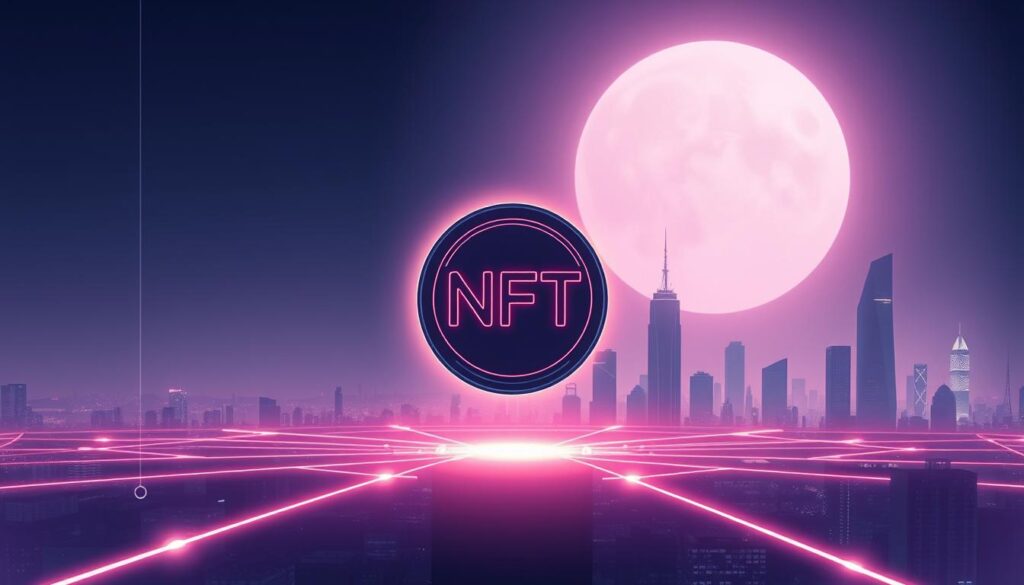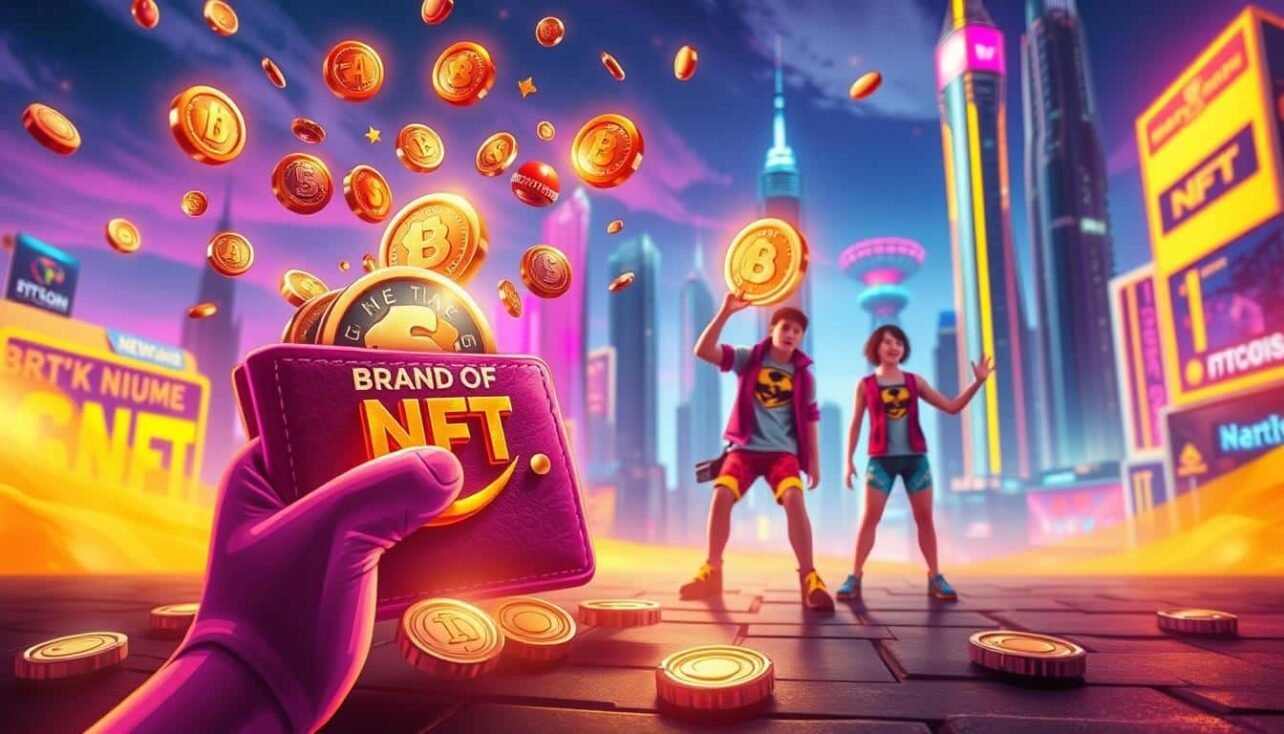Move beyond points and give customers something unique and verifiable. This introduction outlines a practical playbook for U.S. companies that want to evolve a loyalty program into a modern, engaging experience.
Start by turning fungible points into tradable tokens, token-gated access, or profile art tied to preferences. Examples like Clinique’s art raffles and Starbucks Odyssey’s stamp system show how nfts can add perceived value without heavy crypto friction.
Choose efficient blockchains, wallet-light access, and marketplaces that fit scale and fees. That reduces friction and keeps operational simplicity.
Expect a future-focused playbook that covers chain selection, marketplace choice, art and utility design, measurement, and trust protections. This guide previews structures—points, tiers, paid memberships, and values-based models—and when each helps customers and brands.
Key Takeaways
- Shift from generic points to tokenized experiences that boost engagement and perceived value.
- Use energy-efficient chains and suitable marketplaces to control fees and scale.
- Offer wallet-light or credit-card checkout to widen access and speed adoption.
- Design clear utility like token-gating, experiential perks, and digital/physical blends.
- Measure outcomes, protect trust, and align rewards with your value proposition.
What this how-to guide delivers for U.S. brands and customers
We map clear paths for marketers to test on-chain collectibles while protecting customer experience and legal risk.
Practical outcomes include higher participation, clearer benefits tied to on-chain ownership, and measurable engagement lifts. Examples from Starbucks Odyssey and Clinique illustrate multiple UX patterns—stamp mechanics, credit-card checkouts, and social-raffle flows.
The guide helps teams scope and prioritize initiatives. It covers legal alignment, consumer protection, and brand safety standards for the U.S. market.

Readers learn to match reward structures to audience price points and to pair access mechanics that delight customers. The playbook also shows how to explain the sense of ownership nfts confer, so users see value from day one.
- Cross-functional roadmap: marketing, product, data, and compliance roles and checkpoints.
- Evaluation: flexibility, tradeability, secondary market rules, and equitable outcomes.
- Support: customer education, help content, and simple support workflows for all comfort levels.
| Deliverable | What teams get | Customer benefit | Key KPI |
|---|---|---|---|
| Pilot checklist | Scope, legal, UX test plan | Smoother onboarding | Participation rate |
| Reward design guide | Access and experience templates | Clear ownership sense | Retention lift |
| Measurement dashboard | KPIs, cohort tracking | Transparent value for customers | Incremental sales |
Finally, the playbook includes templates and checklists to pilot, learn fast, and scale responsibly across channels and markets. Use them to iterate with confidence and to document outcomes that matter to stakeholders.
Web3 essentials: NFTs, blockchain technology, and why they matter for loyalty programs
Web3 primitives transform generic point balances into verifiable, transferable digital assets with real ownership. Non-fungible tokens are unique digital assets recorded on a blockchain ledger that store metadata—name, description, and provenance—rather than the media itself.

From points to tokens: unlike fungible points, tokens are scarce, individualized, and interoperable. Members can hold, transfer, or sell a token across compatible platforms. Smart contracts automate fulfillment and enforce embedded rules without middlemen.
Security and interoperability: blockchain consensus validates state changes across distributed computers. That delivers tamper-proof ownership and near-instant updates that traditional databases struggle to match.
- Unique identifiers grant portable utility: access, event entry, or collectible status.
- Benefits for organizations include less fraud, programmable fulfillment, and clear audit trails.
- Practical concerns: custody, private-key safety, and wallet-light UX for mainstream customers.
| Primitive | Customer value | Operational benefit |
|---|---|---|
| On-chain token | Verifiable ownership | Transparent history |
| Smart contract | Automated fulfillment | Reduced manual ops |
| Interoperability | Portable experience | Broader reach |
Clear education and simple custody options help customers understand what they own and how to use it. Together, these primitives form a more flexible foundation than closed, points-only systems.
Choose your loyalty model: points, tiers, paid memberships, and value-driven programs
Pick a model that maps customer actions to meaningful tokens and clear benefits across onboarding, retention, and VIP recognition.

Point-based redemptions into tradable tokens
Convert earnable points into redeemable nfts that members can keep, trade, or sell. This creates a path from routine purchases to secondary-market value.
Use social raffles or bid mechanics to allocate scarce art or special drops fairly. That boosts participation and creates excitement without heavy spend.
Tiered structures that unlock access and rarity
Layer Bronze, Silver, and Gold tiers where higher levels mint rarer tokens. Each tier should add utility—early product access, private communities, or limited releases.
Paid membership tokens that evolve
Offer membership tokens that act as proof of access and update with behavior. Tokens can gain benefits over time as customers engage with products or services.
Value-driven collectibles for purpose alignment
Issue collectibles tied to social or environmental initiatives. These nfts signal support and link purchases to measurable impact.
- Bundle on-chain perks with off-chain services to amplify utility without complicating checkout.
- Map tokens to lifecycle events: onboarding gifts, reactivation drops, and VIP recognition.
- Use social auctions to distribute scarce art transparently and drive engagement.
| Model | Primary benefit | Operational note |
|---|---|---|
| Points → Tradable tokens | Monetized member value | Requires marketplace integration |
| Tiered tokens | Escalating access and rarity | Clear rules for upgrades/downgrades |
| Paid membership tokens | Predictable revenue, evolving perks | Manage token lifecycles and updates |
| Value-driven collectibles | Purpose alignment and PR value | Track impact and legal disclosures |
Governance and reporting: set guardrails for benefit changes, monitor participation and engagement, and compare models with clear KPIs before scaling.
Select the right blockchain and marketplace stack for scale, cost, and security
Choose a blockchain and marketplace mix that matches your expected transaction volume, user flow, and security needs.

Platform fit matters. Ethereum offers strong security and broad adoption, but higher gas fees. Layer 2s like Polygon cut costs and keep compatibility. Solana brings high throughput and low fees, though it has seen past outages.
Platform trade-offs
Flow and Tezos prioritize energy efficiency and developer tools. For U.S. launches, compare performance, fees, and ecosystem maturity to match transaction volume and risk tolerance.
Marketplaces and minting
OpenSea gives wide discovery and multi-chain support. Rarible supports decentralized storefronts and governance. SuperRare is curated for high-value art. Decide between on-demand minting or pre-mint drops, and weigh custodial versus non-custodial flows for support overhead.
- Weigh environmental footprint: prefer PoS chains for lower energy impact.
- Set governance for contract updates, royalties, and token standards to future-proof interoperability.
- Instrument data telemetry across chains and marketplaces to track conversions and engagement.
| Platform | Strength | Consideration |
|---|---|---|
| Ethereum | Security, adoption | Higher gas fees; Layer 2 suggested |
| Polygon | Low fees, compatibility | Depends on bridge and tooling |
| Solana | High throughput, low cost | Past instability; evaluate SLAs |
| Flow / Tezos | Energy efficient, developer friendly | Smaller marketplaces; good for sustainable positioning |
Security and access design: require best practices for key handling, signing flows, and fraud prevention while abstracting complexity for the user. Maintain vendor SLAs and contingency plans to manage outages or policy changes.
Design NFT rewards that drive utility, access, and engagement
Build collectibles that grant real access and evolve with behavior to turn occasional buyers into active participants. Start by mapping concrete benefits—early access, event invites, and product drops—directly to token ownership. Clear value reduces friction and increases participation.
Token-gating for early access and member-only perks
Token-gating limits drops, content, and experiences to token holders. Use it to provide early access to limited-run products and exclusive events that reinforce scarcity and status.
Evolving membership tokens and profile art
Design membership tokens that visually update as customers engage. Dynamic profile art signals preferences and unlocks tailored benefits tied to behavior.
Digital twins for limited-edition products
Pair on-chain collectibles with physical items so holders can preview and claim limited-edition products. Digital twins speed fulfillment and create an omnichannel experience that feels modern and tangible.
Programmable royalties to fund perks
Route a percentage of secondary sales back to the program via smart contracts. These programmable royalties can finance fresh perks, community events, and special experiences.
- Combine art with practical utility so customers see immediate and ongoing value.
- Keep eligibility rules transparent and audit-ready: tiers, expiry, and transfer policies should be simple to explain.
- Plan lifecycle steps: upgrade paths, sunsetting older tokens, and migration that preserves member continuity.
- Design onboarding flows so first-time users can redeem benefits without crypto knowledge.
| Mechanic | Customer benefit | Operational note |
|---|---|---|
| Token-gated drops | Early access to product launches | Requires verification layer and clear comms |
| Dynamic membership art | Signals status, personalizes offers | Track events to trigger visual upgrades |
| Digital twin mint | Smoother physical fulfillment | Link on-chain ID to order system |
Test multiple mechanics to learn which mix of access, art, and perks drives the strongest engagement lift. Small pilots reveal what customers value most before scaling.
Build participation loops: community, storytelling, and social mechanics
Create participatory loops that turn casual buyers into active contributors. Short campaigns and clear calls to action spark sharing and repeat visits.
Social contests can ask customers to submit photos or stories for a chance to win scarce nfts. Raffles and content challenges drive virality and measurable participation.
Contests, raffles, and reward bidding
Use point-based bidding so members compete fairly for limited art drops. This gamified flow boosts engagement and motivates continued earning behavior.
DeFi-inspired incentives and staking
Offer staking where locking tokens yields bonus perks or access to special events. That model raises retention and encourages longer-term participation.
- Host virtual AMAs, live reveals, and pop-ups to convert online buzz into real-world momentum.
- Recognize contributors with leaderboards, badges, and public shout-outs to deepen the sense of community.
- Include moderation rules and anti-bot checks to keep spaces fair and safe.
| Mechanic | Customer benefit | Metric |
|---|---|---|
| Social contests | Viral reach | Participation rate |
| Bid-based drops | Fair allocation | Conversion rate |
| Staking | Longer retention | Engagement lift |
Launch plan and UX: wallet-light onboarding and seamless payments
Design onboarding so users can join with an email and claim digital items instantly. Starbucks Odyssey shows this works: customers buy limited drops with a credit card and earn activity stamps without mandatory wallets.
Keep flows simple. Offer credit-card checkout for drops and let customers view owned nfts in a clean mobile and web gallery. Add tooltips and short tutorials to guide first-time buyers.
- Auto-verify ownership on-chain and grant access without manual review.
- Provide an easy transfer path for users who later want self-custody.
- Integrate fulfillment so physical product redemptions and digital benefits sync reliably.
- Use early access queues, reminders, and rate limits to smooth launches.
- Publish status pages and alerts for marketplace or blockchain incidents.
| Area | Action | Metric |
|---|---|---|
| Onboarding | Email sign-up + instant claim | Activation rate |
| Payments | Credit-card checkout for drops | Payment conversion |
| Fulfillment | Link token ownership to orders | Redemption success |
| Support & legal | Localized terms and plain-language disclosures | Support tickets |
Measure from day one. Track activation, drop-through, payment conversion, and benefit first-use. Localize content for U.S. compliance and accessibility to reduce friction and build trust.
Data and optimization: measure value, engagement, and ROI
Combine on-chain records with first-party signals to see which digital assets drive purchases and repeat visits. Blockchain entries give tamper-proof ownership events. CRM data links those events to customer behavior and spend.
On-chain and first-party data to personalize rewards and journeys
Start by defining clear KPIs. Track incremental revenue, retention, order frequency, AOV, and redemption tied to specific tokens or drops.
- Merge wallet events with profiles to tailor offers, access tiers, and messaging cadence.
- Track views, claims, transfers, and listings to learn what nfts and digital assets resonate.
- Run A/B tests for art styles, bundles, and pricing to optimize ROI.
- Attribute outcomes by channel and cohort to find profitable acquisition paths.
- Monitor secondary market activity to adjust supply and sustain healthy collector dynamics.
- Build real-time dashboards for drop performance, activations, and support volume.
- Embed privacy-by-design: consent flows, data minimization, and clear U.S.-focused disclosures.
- Feed insights into creative and product roadmaps and set review cycles to recalibrate tiers and economics.
| Focus | Metric | Action |
|---|---|---|
| Value creation | Incremental revenue, AOV | Link token ownership to purchases |
| Engagement | Claims, transfers, views | Optimize drop timing and creative |
| Retention | Repeat rate, cohort LTV | Personalize offers via merged profiles |
For more tactical guidance on practical launches, review an nft loyalty program case study to align measurement with execution.
Risk, ethics, and sustainability: safeguards for brand trust
Protecting trust requires clear ethics and active safeguards when digital collectibles become customer assets.
Commit to energy-efficient choices. Select chains like Polygon, Flow, or Tezos to reduce environmental impact and align with corporate values. State the reasoning plainly so customers see the intent.
- Transparent policies: publish clear rules on royalties, resale, acceptable use, and any changes over time.
- Security first: enforce secure key management, signed transactions, anti-phishing guidance, and active fraud monitoring.
- Customer care: provide escalation paths for lost access, mistaken transfers, and marketplace disputes.
- Alternatives: offer equal paths for customers who opt out of nfts so loyalty recognition remains inclusive.
| Focus | Action | Benefit |
|---|---|---|
| Environmental | Choose low-energy chains | Reduced footprint, positive PR |
| Legal & tax | Run U.S.-focused compliance reviews | Lower regulatory risk |
| Operational | Train teams and update statements | Consistent customer communications |
Update sustainability statements as blockchain technology evolves and review processes over time. Companies that pair clear disclosures with strong security and fair distribution protect reputation and keep customers confident.
Real-world inspiration: brands elevating loyalty with NFTs
Practical examples show how tokenized collectibles can link digital art and access to real-world perks without heavy crypto friction.
Starbucks Odyssey — stamps, checkout, and experiential perks
Starbucks uses on-chain “stamps” earned via coffee challenges and mini-games. Members can also buy limited stamps with a credit card, which removes wallet barriers.
Stamps unlock tangible perks: bonus points, coffee-making classes, and invites to special events. This wallet-light flow boosts engagement and broadens reach to customers unfamiliar with blockchain tools.
Clinique Smart Rewards — social storytelling and dynamic art
Clinique ran a time-limited raffle where members submitted stories on Instagram, TikTok, and Twitter. Winners received coveted products and color-changing digital art announced by ambassadors Emilia Clarke and Melissa Barrera.
The ambassador-led reveals amplified reach and trust. Scarcity and storytelling created high perceived value for both the products and the digital art.
- Keep drops scarce and align art with product identity.
- Bundle utility so collectibles feel meaningful and usable.
- Publish simple rules and transparent selection methods to build trust.
| Example | Mechanic | Outcome to track |
|---|---|---|
| Starbucks Odyssey | Stamps + credit-card checkout | Sign-ups, perk redemptions |
| Clinique Smart Rewards | Social raffle + dynamic digital art | Contest participation, social reach |
| Combined lessons | Scarcity, clear comms, mainstream access | Engagement lift, secondary market interest |
How to build brand loyalty programs using NFT rewards
Start small, iterate fast, and map every step to measurable customer value.
Begin with clear goals and guardrails: retention, frequency, or LTV. Pick a model—points conversion, tiers, paid access, or value-driven drops—and document how benefits tie to milestones.
Select a blockchain and marketplace that balance fees, scale, and sustainability. Design tokens and unique digital art so ownership unlocks real perks and access.
Keep onboarding simple: wallet-light claims, credit-card checkout, and plain support for first-time users. Use token-gating, programmable royalties, and synced fulfillment to protect experience.
Run a defined pilot, measure on-chain and CRM signals, gather feedback, then scale the nft loyalty program with clear transparency and sustainability reporting.
FAQ
Q: What can U.S. companies expect from this how-to guide?
A: This guide explains practical steps for integrating non-fungible tokens into customer retention strategies. It covers model selection, blockchain choices, marketplace options, design tactics for digital assets, onboarding UX, measurement approaches, and ethical safeguards tailored to American consumers and regulatory environments.
Q: How do tokens differ from traditional points-based systems?
A: Tokens represent verifiable digital ownership on a public ledger, so customers can hold, trade, or display assets. Unlike centralized points, these assets can include access rights, event passes, or digital collectibles that retain provenance and scarcity, creating stronger emotional and financial value for participants.
Q: Which blockchains are best for scale, cost, and sustainability?
A: Consider Ethereum for broad tool support, Polygon for lower transaction fees, Solana for high throughput, Flow for consumer apps, and Tezos for energy-efficient operations. Choose based on expected volumes, wallet compatibility, and your environmental messaging.
Q: How should companies pick a marketplace and minting approach?
A: Match the marketplace with your audience and asset type—OpenSea for wide exposure, SuperRare for curated art, and Rarible for community minting. Decide between lazy minting, gasless options, or direct contract minting to balance cost and ownership clarity.
Q: What reward mechanics drive ongoing engagement?
A: Use token-gating for early access, timed drops, evolving membership tokens that reflect activity, staking or burn-to-upgrade flows, and digital twins that link physical purchases to scarce digital items. Combine storytelling and social mechanics like raffles and contests to amplify participation.
Q: How do you design onboarding to avoid wallet friction?
A: Offer wallet-light options such as custodial accounts, social logins that bridge to wallets, and fiat checkout for purchases. Provide clear step-by-step UX, visible account recovery guidance, and education about private keys to reduce abandonment.
Q: What data should teams track to measure ROI?
A: Track on-chain signals (mint activity, transfers), first-party behavior (purchase frequency, repeat rate), engagement metrics (drop participation, event attendance), and financial KPIs (customer lifetime value, secondary market royalties). Use these to iterate reward structures and communication.
Q: How can companies address security and consumer trust?
A: Implement transparent smart contracts, undergo third-party audits, provide clear terms of service, and communicate privacy practices. Use energy-efficient chains or carbon offsets to support sustainability claims and disclose royalty and secondary-sale mechanics up front.
Q: What legal and ethical considerations matter most?
A: Stay compliant with consumer protection laws, intellectual property rules, and taxation guidance. Avoid misleading scarcity claims, ensure fair access, and protect customer data. Work with legal counsel on terms for transferability, resale, and refund policies.
Q: Can mainstream brands successfully blend physical products with digital assets?
A: Yes. Brands like Starbucks and Clinique have shown how stamps, challenges, limited-edition artwork, and experiential perks can tie physical purchases to digital ownership. Pair limited runs of digital items with in-store benefits or exclusive product drops for maximum impact.
Q: How should marketers position value to customers unfamiliar with web3?
A: Emphasize clear consumer benefits: exclusive access, collectible art, real utility, and membership perks. Avoid technical jargon; explain how tokens unlock experiences or savings and provide simple guides for setup and use.
Q: What are practical first steps to launch a pilot?
A: Start small with a themed drop tied to a campaign or event. Select an accessible chain, use a simple minting flow, limit supply to test demand, and collect feedback. Measure engagement and secondary-market behavior before scaling.
Q: How do programmable royalties help sustain the effort?
A: Royalty structures let creators or companies receive a percentage of secondary sales. Those funds can finance future drops, community rewards, or charitable initiatives, creating a self-sustaining cycle that benefits both customers and teams.


No comments yet